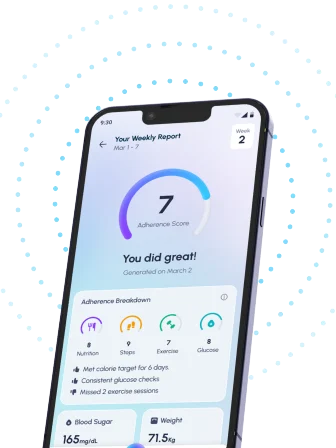Table of Contents
- Diabetes and Stroke Risk in African Americans
- Understanding Your Stroke Risk: The Diabetes Factor
- How Diabetes Increases Stroke Risk for Black Americans
- Preventing Stroke: A Guide for Black Americans with Diabetes
- Is Diabetes a Major Stroke Risk for African Americans?
- Frequently Asked Questions
- References
Did you know that African Americans are disproportionately affected by stroke, and diabetes significantly increases that risk? This alarming statistic highlights the crucial need for Understanding Stroke Risk: Diabetes and African Americans. This blog post will delve into the complex relationship between these two health concerns, exploring the underlying reasons for this disparity and offering practical steps you can take to protect yourself and your loved ones. We’ll examine preventative measures, early detection strategies, and the importance of proactive healthcare. Let’s work together to empower the community and improve stroke outcomes.
Diabetes and Stroke Risk in African Americans
Diabetes significantly increases the risk of stroke, a leading cause of death and disability globally, including in many Indian and tropical countries. This risk is even more pronounced for African Americans. Research shows that individuals with diabetes face a heightened vulnerability to stroke, and this risk is compounded by other factors. For example, studies indicate that smokers with diabetes face a doubled mortality rate from cardiovascular issues, a category encompassing stroke. This statistic underscores the critical need for preventative measures within this high-risk population.
Understanding the Elevated Risk
Several factors contribute to the higher stroke risk among African Americans with diabetes. Genetic predispositions, often coupled with socio-economic factors influencing access to healthcare and healthy lifestyle choices, play a significant role. Furthermore, higher rates of hypertension and obesity within this community further exacerbate the risk. Early detection and proactive management of diabetes are crucial in mitigating these risks. This involves regular blood sugar monitoring, adherence to prescribed medication, and a commitment to a healthy lifestyle. Understanding how diabetes affects blood flow is also critical; How Does Diabetes Affect Blood Flow? provides valuable insights into this connection.
Practical Steps for Prevention
In the context of Indian and tropical countries, where access to healthcare can vary, focusing on preventative measures is paramount. Regular check-ups with healthcare providers are essential, including blood pressure and blood sugar monitoring. Adopting a diet rich in fruits, vegetables, and whole grains, while limiting processed foods and saturated fats, is vital. Regular physical activity and stress management techniques are also crucial components of a comprehensive preventative strategy. Prioritizing these lifestyle changes can dramatically reduce the risk of stroke for African Americans living with diabetes, improving their quality of life and longevity. The challenges are particularly significant for younger populations; Diabetes in Teenagers: Understanding the Impact explores the impact of diabetes on this vulnerable group.
Taking Action Today
For African Americans in India and tropical countries living with diabetes, proactive steps are critical. Seek regular medical check-ups, maintain a healthy lifestyle, and discuss your risk factors with your doctor to develop a personalized prevention plan. Your health is an investment in a longer, more fulfilling life.
Understanding Your Stroke Risk: The Diabetes Factor
Diabetes significantly increases your risk of stroke, a leading cause of death and disability globally. This is especially true in populations like those in Indian and tropical countries, where diabetes prevalence is rising rapidly. A startling statistic reveals that 61% of people with diabetes are aged between 20-64 years; 39% are aged 65+, highlighting the broad impact across age groups. This means that stroke prevention needs to be a priority regardless of age for those managing diabetes.
Diabetes and Stroke: A Dangerous Combination
The link between diabetes and stroke is complex. High blood sugar damages blood vessels, increasing the risk of blood clots, a major cause of stroke. Furthermore, diabetes often coexists with other risk factors like high blood pressure and high cholesterol, further amplifying the stroke risk. In India and other tropical countries, lifestyle factors like unhealthy diets high in processed foods and lack of physical activity contribute significantly to both diabetes and stroke prevalence.
Protecting Yourself: Actionable Steps
Managing your blood sugar levels is paramount. Regular checkups with your doctor, including HbA1c tests, are crucial. Adopting a healthy lifestyle is equally important; this includes a balanced diet rich in fruits, vegetables, and whole grains, regular exercise, and maintaining a healthy weight. Quitting smoking, if applicable, is also vital as it significantly increases the risk of stroke. For more information on the crucial role of diet, see our related article, The Role of Diet in Preventing and Managing Stroke.
Taking Charge of Your Health
Understanding your personal risk factors is the first step towards prevention. Talk to your doctor about your risk for stroke, especially if you have diabetes. Early detection and management of diabetes and associated risk factors can significantly reduce the chances of a stroke. Regular health checkups and proactive lifestyle changes are key to a healthier and longer life, particularly within the context of high diabetes prevalence in Indian and tropical regions. Remember that protecting your heart is also key to reducing your stroke risk; learn more with our guide, Protect Your Heart from Diabetes: 5 Essential Steps.
How Diabetes Increases Stroke Risk for Black Americans
Diabetes significantly elevates the risk of stroke, and this risk is even more pronounced among Black Americans. While diabetes affects people of all races, studies consistently show higher rates of stroke and related complications within the Black community. This disparity is likely due to a complex interplay of genetic predisposition, socioeconomic factors, and access to healthcare. The impact extends beyond the United States; similar disparities are observed in many Indian and tropical countries, highlighting a global health challenge.
Understanding the Connection
The link between diabetes and stroke is multifaceted. High blood sugar levels damage blood vessels over time, leading to atherosclerosis (hardening of the arteries). This process increases the risk of blood clots forming, which can travel to the brain and cause a stroke. Furthermore, diabetes can also damage the nerves and blood vessels that control blood pressure, further increasing the likelihood of stroke. The prevalence of type 2 diabetes, particularly concerning given that approximately 35 per 10,000 U.S. youths have diagnosed diabetes, exacerbates this risk, especially when coupled with other risk factors like hypertension and obesity. It’s also important to understand the impact diabetes can have on overall health, including mental well-being. For more information on this connection, please see our article on The Impact of Diabetes on Mental Health.
Taking Action in Indian and Tropical Countries
In many Indian and tropical countries, access to preventative healthcare and diabetes management can be limited. This makes proactive steps crucial. Regular blood sugar monitoring, adopting a healthy diet rich in fruits, vegetables, and whole grains, and engaging in regular physical activity are essential. Seeking early medical attention for any symptoms suggestive of stroke, such as sudden weakness or numbness, is paramount. Increased awareness campaigns targeting Black communities within these regions, emphasizing the heightened risk and promoting accessible preventative measures, are vital for improving outcomes. Early detection and intervention are key to reducing the devastating impact of stroke in this vulnerable population. While diabetes is a significant risk factor for stroke, it’s also important to consider other potential health consequences. For example, some research explores the link between diabetes and cancer. To learn more, you might find our article on Does Diabetes Cause Cancer? helpful.
Preventing Stroke: A Guide for Black Americans with Diabetes
Understanding the Elevated Risk
Diabetes significantly increases the risk of stroke, a devastating condition affecting millions globally. This risk is even more pronounced for Black Americans, who experience disproportionately higher rates of both diabetes and hypertension. While the provided research focuses on India, where over 60% of people with diabetes also have hypertension – a key stroke risk factor – the underlying link between diabetes and hypertension’s contribution to stroke risk is a global concern, particularly relevant in tropical and Indian countries with high diabetes prevalence. This highlights the critical need for proactive preventative measures.
Practical Steps for Prevention
Managing blood sugar is paramount. Regular blood glucose monitoring, coupled with a balanced diet rich in fruits, vegetables, and whole grains, and consistent adherence to prescribed medication, is crucial. Controlling blood pressure is equally important. Regular checkups and lifestyle modifications, such as reducing sodium intake and increasing physical activity, are essential to manage hypertension effectively. Maintaining a healthy weight can significantly reduce the risk of both diabetes and hypertension, thereby lessening stroke risk. Even moderate weight loss can have a positive impact.
Taking Charge of Your Health
Adopting a healthy lifestyle is your best defense against stroke. Regular exercise, even short walks daily, can make a difference. Quitting smoking and limiting alcohol consumption are also vital steps. Regular check-ups with your doctor are crucial for monitoring your blood sugar, blood pressure, and overall health. Early detection and management of these conditions are key to preventing stroke. In India and similar tropical regions, access to quality healthcare is vital; ensure you have a regular doctor and actively participate in your healthcare plan. Remember, proactive steps today can significantly reduce your risk of stroke tomorrow. For more information on managing diabetes as you age, see our guide on Managing Diabetes as You Age: Challenges and Solutions. Learning How to Prevent Long-Term Complications of Diabetes is also crucial for overall well-being and stroke prevention.
Is Diabetes a Major Stroke Risk for African Americans?
Yes, diabetes significantly increases the risk of stroke for African Americans. This heightened risk is a critical concern, particularly in Indian and tropical countries where diabetes prevalence is rising. Research shows that women with diabetes face a 40% higher risk of heart disease compared to men with diabetes, indicating a broader cardiovascular vulnerability that includes stroke. This disparity highlights the importance of proactive healthcare in these communities.
Understanding the Connection
The link between diabetes and stroke is complex but well-established. High blood sugar damages blood vessels, increasing the risk of blood clots and narrowing arteries. This process, accelerated in individuals with poorly managed diabetes, can lead to blockages in the brain, resulting in ischemic stroke. Moreover, diabetes can also increase the risk of hemorrhagic stroke, where a blood vessel in the brain bursts. These factors contribute to a disproportionately high stroke burden within the African American population, especially in regions with limited access to quality healthcare. Understanding how stress impacts the body is also crucial, as How Stress Hormones Affect Diabetes can exacerbate existing conditions.
Taking Action in Indian and Tropical Countries
Given the significant risk, preventative measures are crucial. Regular blood sugar monitoring, healthy eating, consistent exercise, and maintaining a healthy weight are essential steps to mitigate the risk of stroke. Early detection and effective management of diabetes are key to reducing complications. Seek regular check-ups with your doctor, particularly if you have a family history of diabetes or stroke. In Indian and tropical countries, access to affordable healthcare and diabetes education programs is vital for curbing this serious health issue. Early intervention can significantly improve outcomes and save lives. Don’t delay—take charge of your health today. It’s also important to be aware of how diabetes can affect other systems, such as the respiratory system; learn more about How Does Diabetes Affect the Respiratory System?.
Frequently Asked Questions on Stroke Risk
Q1. How does diabetes increase my risk of stroke?
High blood sugar damages blood vessels, making it easier for blood clots to form and increasing your risk of both ischemic and hemorrhagic strokes.
Q2. Why are African Americans at a higher risk of stroke due to diabetes?
This is because socioeconomic factors, limited healthcare access, and higher rates of hypertension and obesity are more prevalent in this population, compounding the effects of diabetes.
Q3. What steps can I take to reduce my risk of stroke if I have diabetes?
Regular blood sugar monitoring, maintaining a healthy lifestyle through diet and exercise, managing your weight, and proactively seeking medical care are crucial preventive measures.
Q4. What are the challenges in addressing the higher stroke risk in certain communities?
Limited access to healthcare and a lack of targeted preventative programs in at-risk communities, particularly in Indian and tropical countries, pose significant challenges.
Q5. How important is early detection and management of diabetes in stroke prevention?
Early detection and management of diabetes are vital in mitigating stroke risk and improving quality of life. It’s particularly crucial in areas with limited healthcare resources.
References
- A Practical Guide to Integrated Type 2 Diabetes Care: https://www.hse.ie/eng/services/list/2/primarycare/east-coast-diabetes-service/management-of-type-2-diabetes/diabetes-and-pregnancy/icgp-guide-to-integrated-type-2.pdf
- Diabetes in Older Adults: A Consensus Report: https://en.iacld.com/UpFiles/Documents/292529019.pdf




